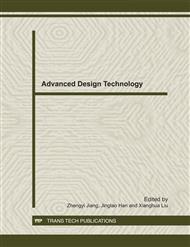p.457
p.461
p.465
p.470
p.477
p.483
p.489
p.493
p.499
Mathematical Model Research of Intelligent Rapid Testing System for Textile Materials Moisture Regain
Abstract:
Because there exist some disadvantages of the traditional moisture regain testing method (oven drying) for textile materials, such as longer testing period, higher energy wastage, laboring intensity, and inefficient, a new instrument i.e. moisture regain rapid testing system has been researched, designed and manufactured for raw silk in this project. This system can record real-time the weight of raw silk sample during the drying in the certain environment oven. The index prediction model has been developed based on the accumulating generation operator (1-AGO) after the data have been pretreated. According to this model, the percent of error is only 2.09% between the predicted value and actual result of raw silk moisture regain within the drying cycle of 40min by the rapid testing system.
Info:
Periodical:
Pages:
477-482
Citation:
Online since:
December 2011
Authors:
Price:
Сopyright:
© 2012 Trans Tech Publications Ltd. All Rights Reserved
Share:
Citation:


